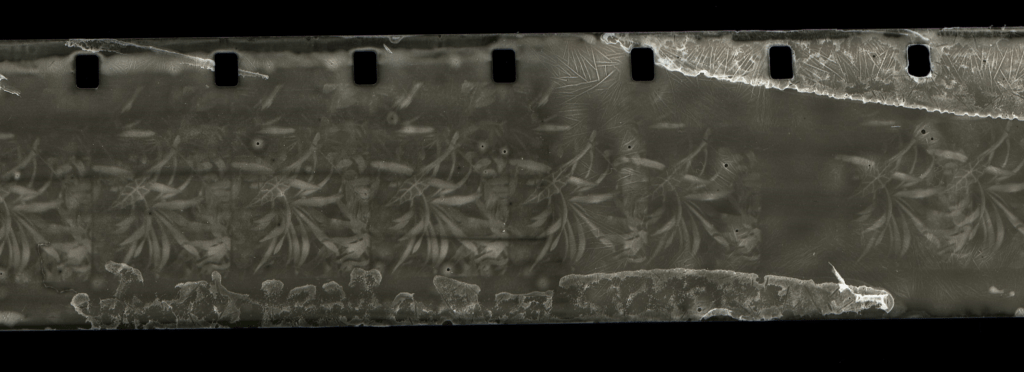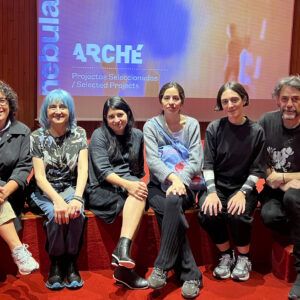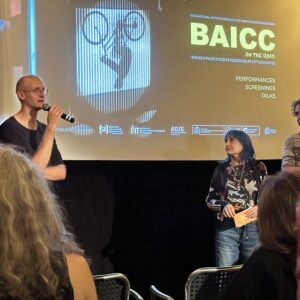
Latitude Mesh by Agnès Hayden was the project chosen in the last call for BAICC, the International Artistic Residency for Cinematographic Creation 2023–24 promoted by (S8) together with AC/E and LIFT.
Agnès Hayden studied at ECAM, specialising in Cinematography at the Madrid Film Institute, where she researched the possibilities for photography in the medium, and completed a master’s degree at LAV. In September 2023, Hayden travelled to Toronto to work at the LIFT (Liaison of Independent Filmmakers of Toronto) facilities on her innovative project concentrating on research into artisanal photochemical emulsion.
On ending the residency, here she is now sharing the work she did there: the result of a dialogue between chemicals and her brushstrokes of homemade emulsion and light. It was a deep study into the physical magnitudes of film, wonderfully expressed in this interview, which leaves us eager for the world premiere at the 15th (S8) Mostra Internacional de Cinema Periférico, that will be held in A Coruña from 21st May to 9th June
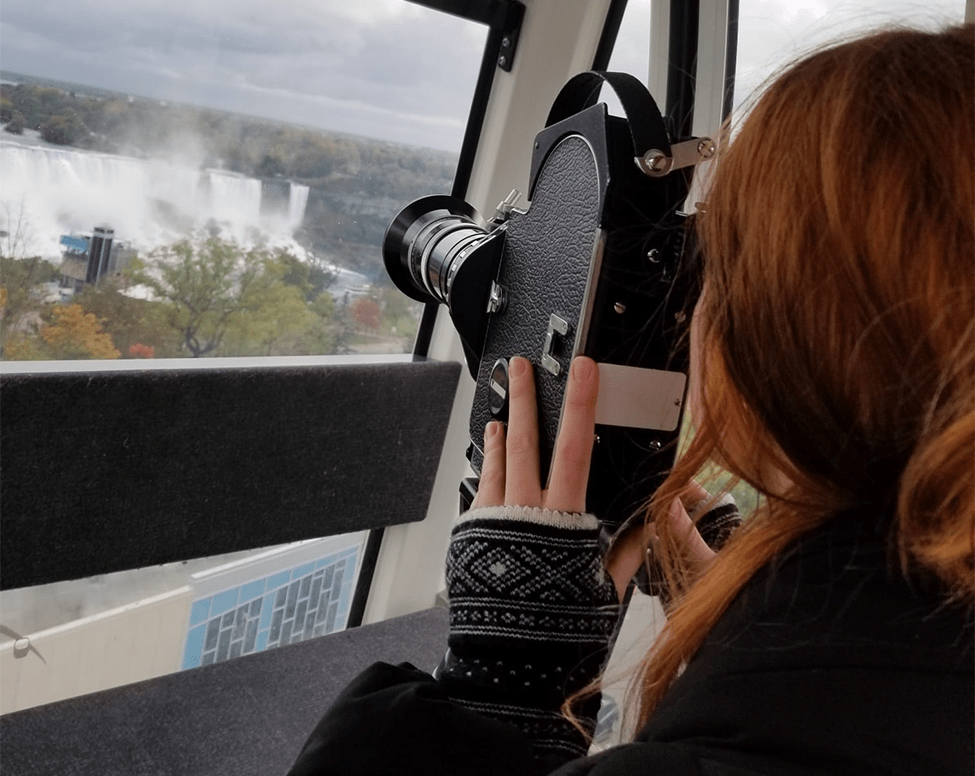
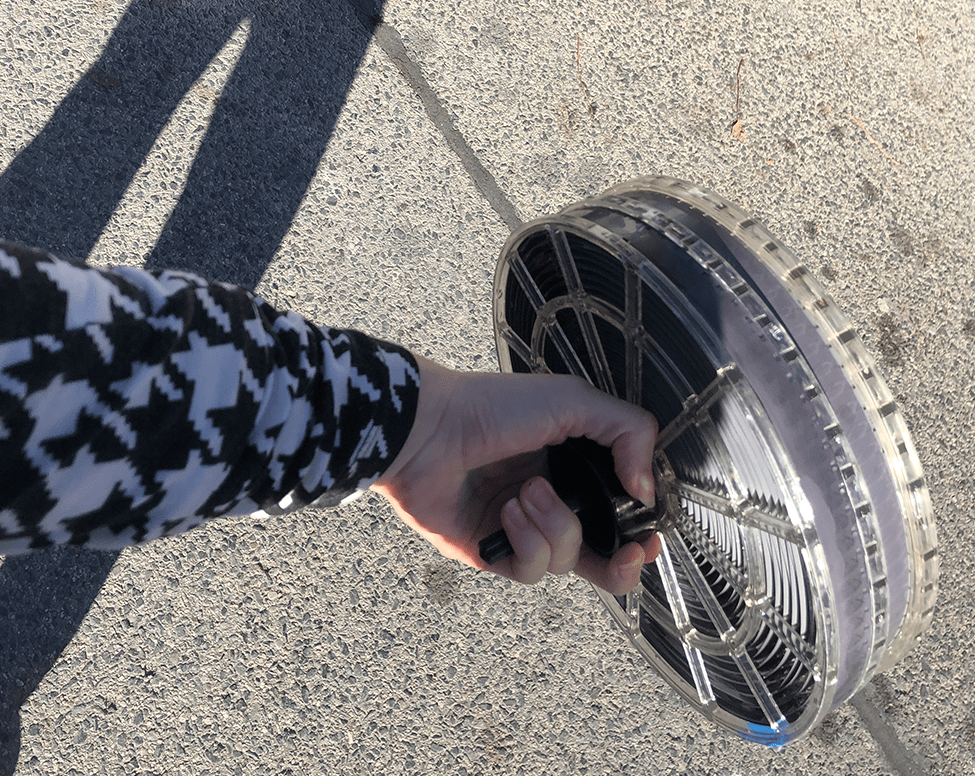
– Could you give us a short introduction to your project Latitude Mesh?
Latitude Mesh is a film project focusing on research into artisanal photochemical emulsion, its characteristics and possibilities, and its dialogue with other manufactured emulsions. Conceptually, the film represents a descent into photographic sensitivity, from reversible Tri-X emulsion, through high-contrast 3378 emulsion for film copying, and finally, my own emulsion, which is homemade using photosensitive chemicals.
– Tell us briefly about the creation process during your stay at the LIFT in Toronto.
My process for creation was based on filming with these three types of film, paying special attention to the homemade emulsion. My work involved getting the balance between all the emulsions. One day I would create the photosensitive liquid, painting it on the film base and letting it set in the dark, and the next day I would go out to film in Toronto with the other types of film, while the homemade emulsion finished setting.
I spent most of my time in my room at LIFT—which the staff had adapted to my needs beforehand—where I could count on total darkness, a double entrance made with curtains to protect it from the light, chemicals, a light table, a film loader, a large table where I could place the film once it had been painted with the homemade emulsion… The second place I visited most often was the developing room, where I processed the tests carried out with the emulsion to find the most optimal processing methods and times. There, I also developed the rest of the emulsions, and tried out other things outside my work such as solarisations and experimental developing of film.
It was quite edifying for me to become so immersed in the project thanks to the conditions provided for me. It made me connect with my work in a special, intimate way. My way of looking at the work took shape and evolved over those days through constant work and a deep analysis of it. It was a dialogue between my expectations and thoughts about the images and what they could offer me after developing them.
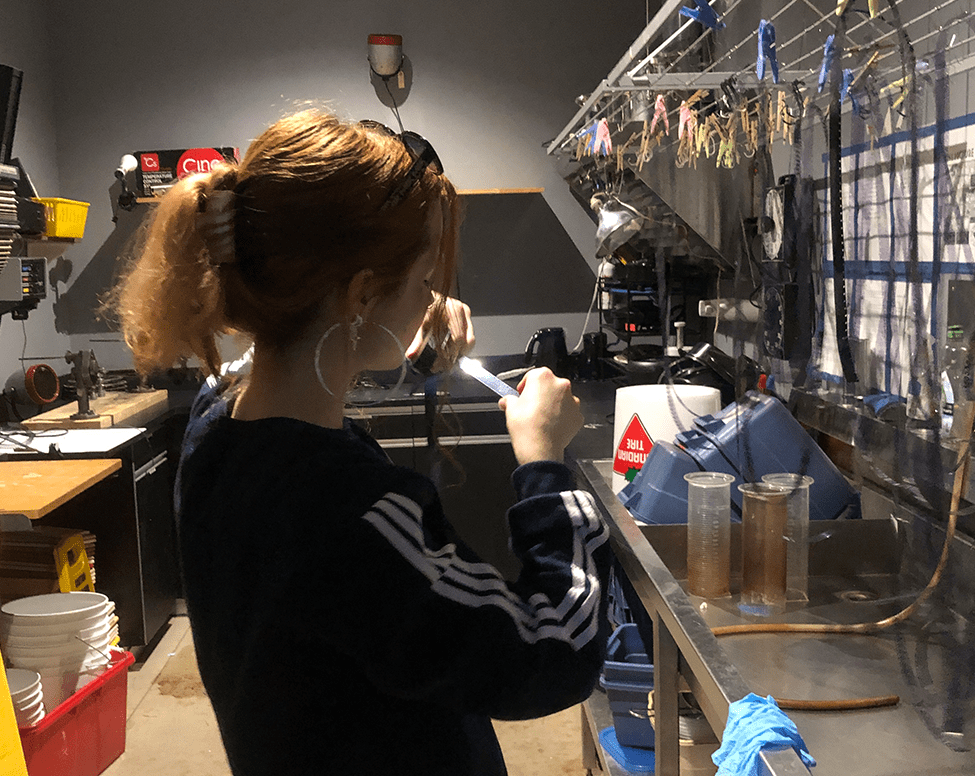
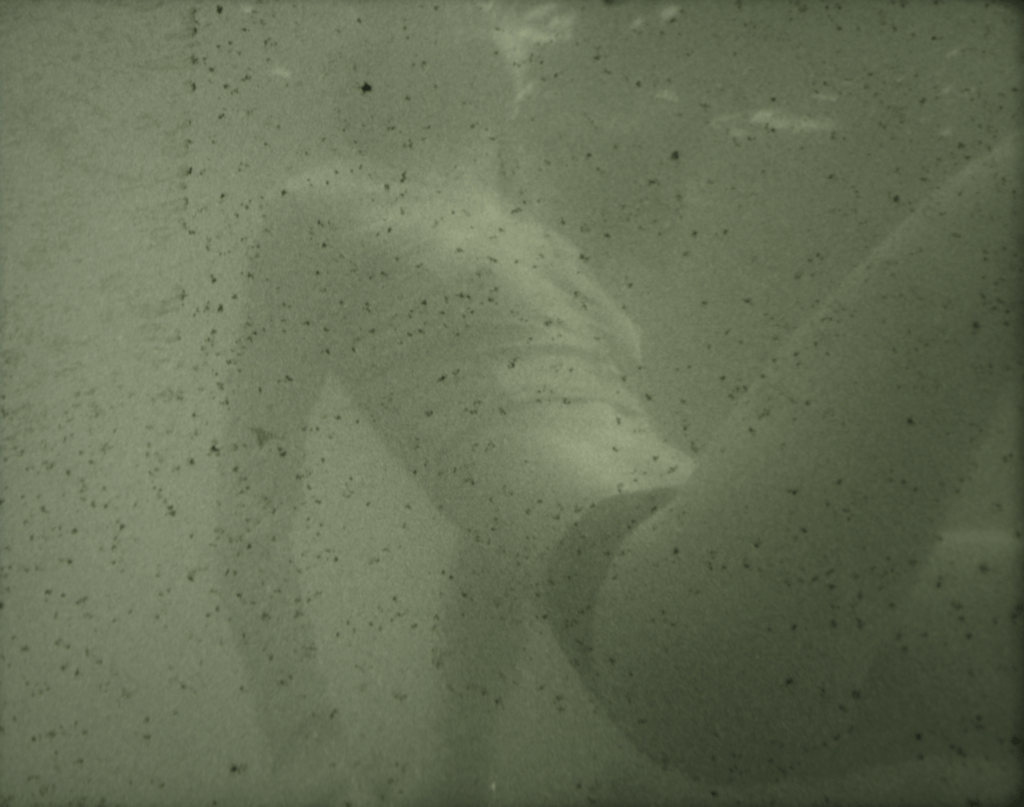
– How were you received among the experimental film community in Toronto, and what feelings did you get on being able to work in a space like LIFT?
I’m very grateful for the kindness I felt during my residency. The entire staff was attentive to my needs (and there were quite a few for my project), and they taught me a lot about the medium of film. Upon my arrival, I expected something more rigid and formal, but there was always the feeling that I was making a movie with friends.
During my stay, the LIFT’s artists and members were constantly coming and going, working on their artwork, chatting with the staff and myself… It was very inspiring to see that the experimental film community in Toronto is so alive right now. And so many of us young people feel restless about working in analogue. Spaces like LIFT provide something like this, which a priori could throw up many difficulties. I think it’s the ideal solution in order for the method of film to remain active, and for new languages to be generated through it. I especially want to thank Robin Riad (the technician and administrator at LIFT) and Esteban Powell (a member of LIFT and former technician and administrator along with Robin) for their familiarity, advice and support, since as soon as I arrived we connected, and from that moment on they were by my side.
– Your work stands out in technical exploration and knowledge of creative processes in the photochemical medium. How has your time at LIFT influenced your work’s artistic evolution? What were you able to explore there?
After discovering the possibilities of homemade emulsion, I became obsessed with the concept. Getting involved in the process of creating the film before the emulsion even exists is very special. In my early tests and filming, I felt a closeness to the outcomes that I have never felt on filming conventionally.
I like the magic of the innocence, of not knowing very well how those images emerge on celluloid; but I like understanding things in depth even more: understanding how and why these images emerge, and as a result knowing how to generate them.
I also liked the idea of acting like a contemporary alchemist for a while.
Over my many encounters with liquid emulsion and celluloid, I came to understand film more as a painting in motion than as a film in itself. The very artisanal process of mixing chemicals, making them react, and painting with brushes on the polyester base as if it were oil on canvas, all brings the work closer to painting than to the usual cinematographic form. The difference is that I was working in the dark.
And yet, despite being a kind of work in which the image itself takes second place compared to the moments surrounding the filming, it is still cinematographic work. Everything is susceptible to change. Something as rigid and established as a projection at 24 frames per second can quickly fall apart as soon as you remove the separation between one frame and the next.


– What stimuli do you find in the analogue format of moving images, and why do you think this choice helps your creative process?
Having the light itself capture the image in the emulsion, with no need for transformation or decoding, as opposed to digital recording, seems very inspiring to me in the analogue medium. It’s as raw and real as an image can be. At the same time, despite being made from light, the analogue format lends the film a physical dimension. It’s not only the images, but also the medium itself; it’s the physical bond between frames, and the rattle of the background projector.
It’s impossible to convey Latitude Mesh into another format other than analogue. This is research into the format in its most corporeal aspect, leaving aside the pictorial facet. In a way, I let the film give me the images with no expectations, because in such a chaotic process, the results cannot be foreseeable. It became more of a dialogue between the chemicals, my brushstrokes and the light, than my preconceived idea and the final outcome.
That chaos provided by the analogue format also seems very edifying to me for the work: you can have a plan, but then you have to let it drift.
– What stage of the process is the project currently at, and what are the next steps going to be?
I finished the work’s sound a few days ago, and right now I’m editing the film, guiding myself through the previous idea edited in digital form. The last phase of the project will be to synchronise as much as possible the soundscape I have produced for the film and the images themselves. Adjusting things here and there. Homemade emulsion can’t be projected as many times as a manufactured emulsion because it’s more fragile and unstable, so I have to be guided by intuition when editing.
